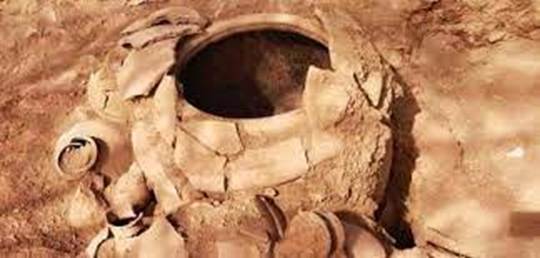What is Keeladi and Why It Matters
- Location: Keeladi, Sivaganga district, Tamil Nadu.
- Findings: Urban settlement traces, brick structures, script inscriptions, pottery, and industrial remains.
- Significance: Indicates a Sangam-era urban civilisation (circa 6th century BCE – 3rd century CE), suggesting:
- Continuity of Tamil culture
- Urban centres along the Vaigai river valley
- Advanced trade, literacy, and planned habitation pre-dating many north Indian sites.
Relevance : GS 1(Culture ,Heritage,History )

Timeline of Excavations
| Phase | Year | Lead Agency/Archaeologist | Key Findings |
| I–II | 2015–2016 | K. Amarnath Ramakrishna (ASI) | Brick structures, graffiti suggesting urban life |
| III | 2017 | P.S. Sriraman (ASI) | Controversial – no continuity reported in structures |
| IV+ | 2018 onwards | Tamil Nadu State Archaeology Dept. | Continued urban findings; now in 10th phase by 2025 |
Institutional Conflict
- 2017: ASI transferred Ramakrishna to Assam post-phase II, despite breakthrough findings.
- Sriraman Phase (III): Claimed lack of continuity with prior phases → criticized for downplaying significance.
- 2024–25: ASI permitted Sriraman to complete pending reports for Phase III (Keeladi) and Kodumanal.
- Meanwhile: ASI asked Ramakrishna to revise his original reports — he refused, defending his conclusions as sound and peer-worthy.
Keeladi vs Kodumanal
- Kodumanal: Located in Erode district — known for bead-making industry, iron tools, and trade links with the Roman Empire.
- Sriraman also excavated one season here; report pending.
Current Progress
- 10 Phases completed at Keeladi (State-led).
- Hundreds of antiquities recovered.
- Material stored in Chennai, facilitating ongoing study and report writing.
Governance Challenges
- Conflict of Interpretations: Differences in archaeological conclusions reflecting possible ideological or bureaucratic interference.
- Central vs State Dynamics: Shift of excavation control from ASI to Tamil Nadu State Archaeology Dept. led to more sustained exploration.
- Report Delays: Highlights need for a time-bound reporting framework in Indian archaeology.
Implications for Indian Cultural History
- Counters Aryan-centric narratives: Keeladi suggests Dravidian urbanism existed independently and early.
- Sangam Age Reimagined: Reinforces historicity of Sangam literature describing trade, urban governance, literacy, and culture.
- Decentralised Heritage Management: Tamil Nadu’s persistence led to deeper exploration, setting an example for other States.



